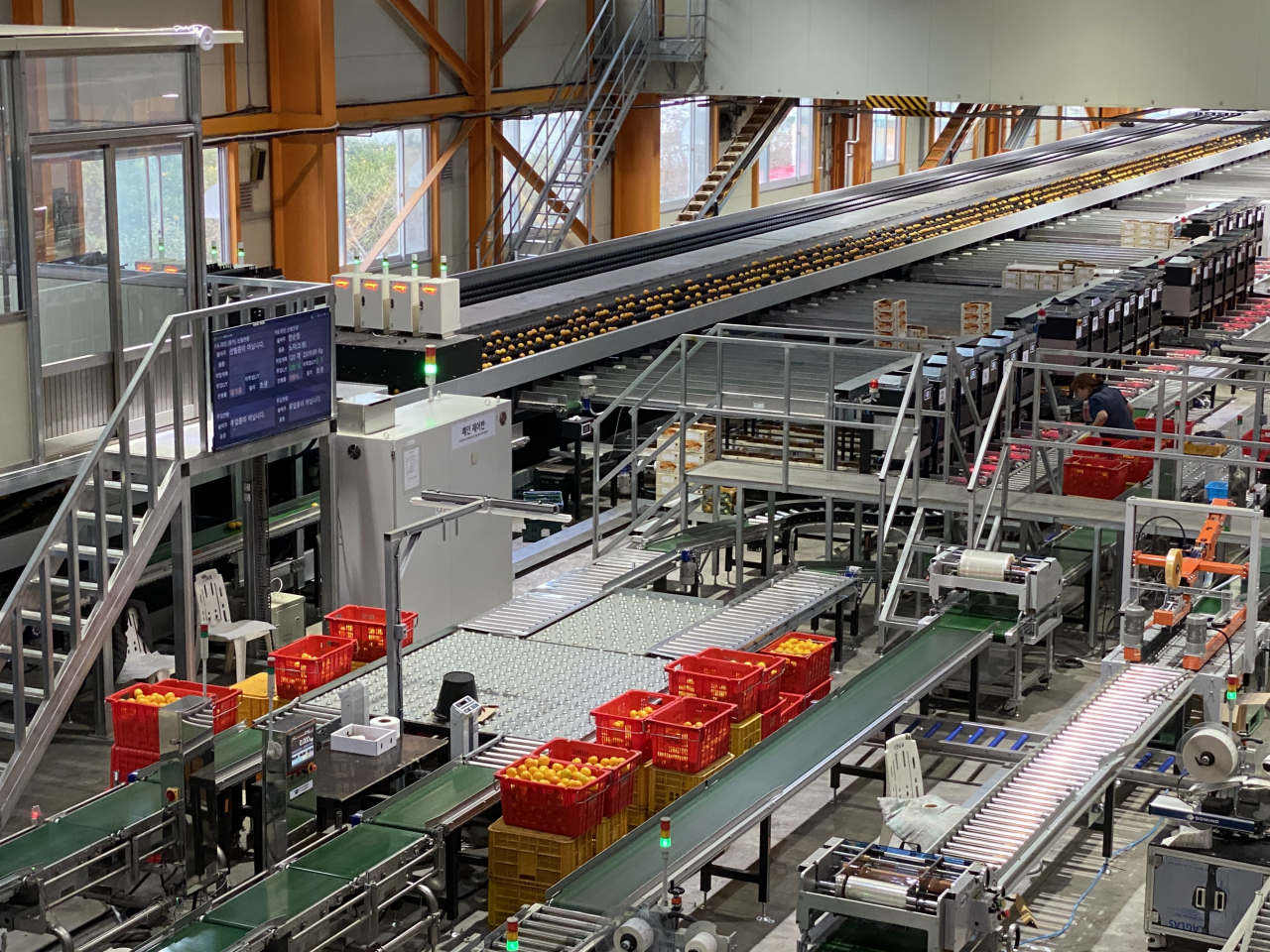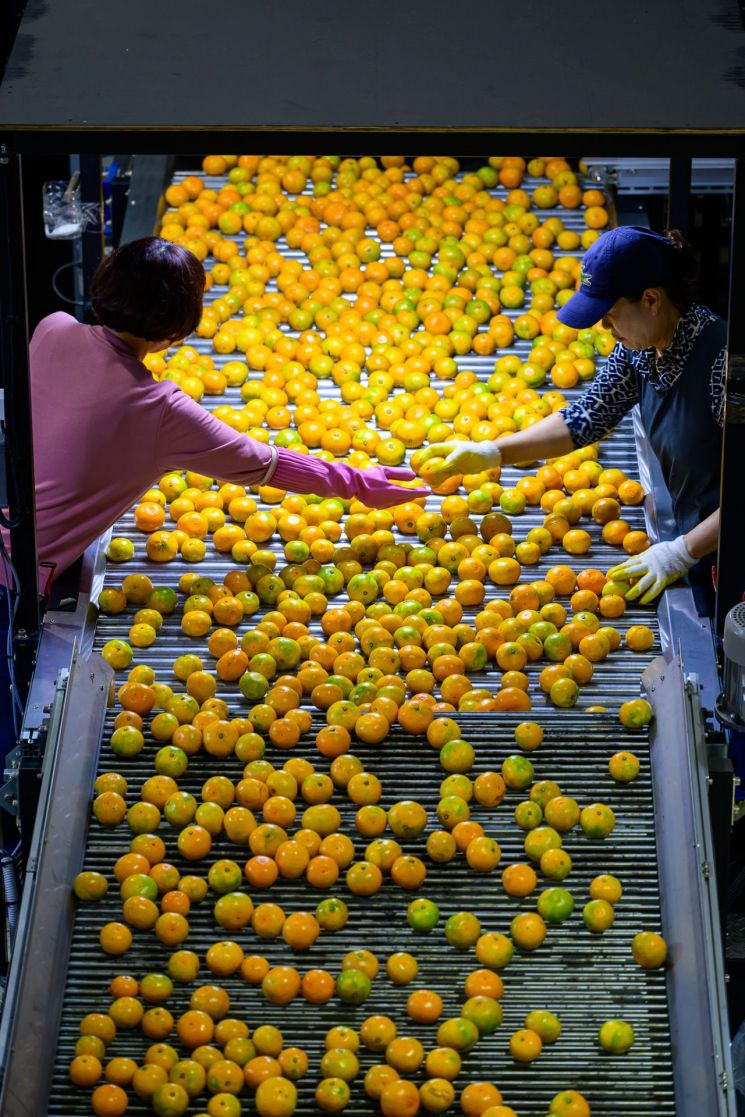 |
Harvested mandarins are sorted and undergo quality checks at the Namwon Agricultural Product Center. (Hwang Joo-young/The Korea Herald) |
JEJU ISLAND -- Jeju’s iconic mandarin orange industry is grappling with mounting challenges as climate change disrupts traditional cultivation practices. This year, prolonged tropical nights and rising temperatures delayed harvests and impacted fruit quality, prompting the island to adapt its agricultural practices.
“Mandarins develop their yellow color when nighttime temperatures fall below 20 degrees Celsius,” said Hyun Jong-ho, manager at the Namwon Agricultural Product Center, one of Jeju’s busiest distribution centers. “This year’s prolonged heat has reduced the quantity of harvest-ready mandarins,” Hyun added.
Hyun further explained that extreme conditions are increasingly causing delays in ripening and disruptions to harvest timelines. According to the Korea Meteorological Administration, tropical nights lasted 63 days from July to September -- nearly double the previous year -- while heatwave days, when temperatures exceed 33 degrees Celsius, totaled 21.4 during the same period.
To address these challenges, Jeju authorities revised regulations in October to allow the sale of green mandarins if they meet strict sweetness standards. This adjustment, along with modified size and quality criteria, is expected to slightly boost harvested volume, with open-field production estimated at 408,000 tons this year, up from 398,000 tons in 2023.
 |
Workers inspect and sort mandarins on a conveyor belt at the Namwon Agricultural Product Center, one of Jeju's businest distribution centers. (Joint Press Corps) |
Despite these efforts, local officials acknowledge the challenges posed by erratic weather patterns, including decreased fruit size and delayed coloring. Meanwhile, subtropical crops are emerging as a potential alternative as Jeju’s climate grows warmer.
The Agricultural Research Institute for Climate Change Adaptation, under the Rural Development Administration, has introduced 58 subtropical crops and identified 17 promising varieties, including mangoes, passion fruit and dragon fruit. “To address the declining cultivation areas for traditional crops, we need to develop new varieties and expand subtropical farming techniques,” said Han Hyun-hee, a researcher at the institute.
However, transitioning to subtropical fruits is a challenge because their cultivation requires costly greenhouses and a shift from traditional mandarin farming methods. “Farmers remain hesitant to switch to subtropical crops due to higher initial investments and unfamiliar farming practices,” Han added.
Jeju’s deep-rooted affection for mandarins reflects their importance to the island’s identity and economy. As of 2023, mandarins accounted for 55.8 percent of Jeju’s total agricultural revenue, generating 1.32 trillion won that year, with 35.7 percent of Jeju’s arable land devoted to citrus farming, according to the Korea Rural Economic Institute.
The significance of mandarins is part of the 2024 Jeju Citrus Expo, which celebrates its 12th year. Held from Wednesday to Tuesday in Seogwipo, the event features exhibitions, business consultations, and forums addressing climate resilience and varietal development.
“Mandarins are more than just a crop -- they’re a symbol of Jeju’s heritage and resilience,” said Ko Byung-gi, chairman of the organizing committee, highlighting the event’s dual role in advancing the mandarin industry and fostering global collaboration.






![[Herald Interview] How Gopizza got big in India](http://res.heraldm.com/phpwas/restmb_idxmake.php?idx=644&simg=/content/image/2024/11/20/20241120050057_0.jpg)
